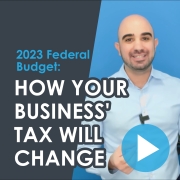
The lure of greater control over your retirement savings with a self-managed super fund may be enticing but the freedom to chart your own destiny also comes with the responsibility to comply with the rules.
An SMSF is a private super fund regulated by the Australian Taxation Office that you manage yourself. You can have up to four members in your fund, each of whom must be a trustee or, if a corporate trustee has been appointed, a director.
As a trustee you are legally responsible for all the decisions made about the fund and compliance. Even if you outsource both the administration and the investment of the fund to a professional, you must still understand what they are doing because you are legally responsible.
So what are the rules an SMSF needs to follow?
5 key rules
An SMSF is a legal tax structure with the sole purpose of providing for your retirement. As a trustee, you need to set and follow an investment strategy that is appropriate for your risk profile and that has been devised to provide for your retirement needs.
It is not something you can set and forget. You need to research your investments, make sound investment decisions and budget for expenses such as professional accounting, legal and financial advice fees.
Basically, the key rules that apply to the SMSF legal tax structure include:
- Sole purpose test. The sole purpose of an SMSF is to provide money for your retirement. It is not to provide you with any pre-retirement benefit. So, if you were to personally benefit from an investment in your SMSF, then you would have broken the sole purpose rule. For example, if you bought a piece of art through your super fund and then displayed it in your home, you would be in violation as you would be enjoying the benefit before retirement.
- Separation of assets. You must keep the fund’s investments completely separate from your personal assets. All assets must be held in the fund’s name and not that of an individual. This policy has its benefits because if a trustee becomes a bankrupt, the assets of the fund will be protected.
- In house assets test. The fund cannot lend to, invest in or lease to a related party of the fund if the value of the asset totals more than 5 per cent of the fund’s assets.
- Arm’s length transactions. If the SMSF leases a building to an associate, for example, then it must always be on a strict commercial basis reflecting true market value. In addition, income from investments with non-commercial conditions such as a limited recourse borrowing arrangement with zero interest rate will also be considered as non-arm’s length income. Any income from non-arm’s length transactions will be taxed at the highest marginal rate.
- Administration. Compliance also involves thorough record keeping. You must keep all records pertaining to the fund from the trust deed, through minutes of meetings to investment decisions. Minutes of meetings and records of changes to trustees must be held for 10 years. Annual returns, accounting records and annual operating statements must be retained for five years.
Other considerations
Once trustees reach retirement age, other considerations come into play. These include making sure members are paid at least the minimum pension.
It’s also important to plan for the possibility that a member may be unable to continue in their role in future. For example, a member may become mentally incapacitated due to dementia. In such a situation, you can switch to a public offer super fund or appoint a legal representative.
Insurance is another area you need to be mindful of. In an APRA-regulated fund, life and total and permanent disability insurance (TPD) are often included at competitive rates. However, the responsibility to arrange insurance cover rests with you if you have your own SMSF.
What now?
If you would like to discuss whether an SMSF might be suitable for you, or would like to switch your current SMSF to us we can arrange that. We can help ensure your fund meets its compliance responsibilities and you have peace of mind that it’s all up to date. Head over to our SMSF page for more info.
Did you find this article interesting?
Sign up to our monthly newsletter here to receive more articles like this, as well as due dates, news, tax tips and other important things that we think are helpful and most importantly current.
This article was written by a third party.











